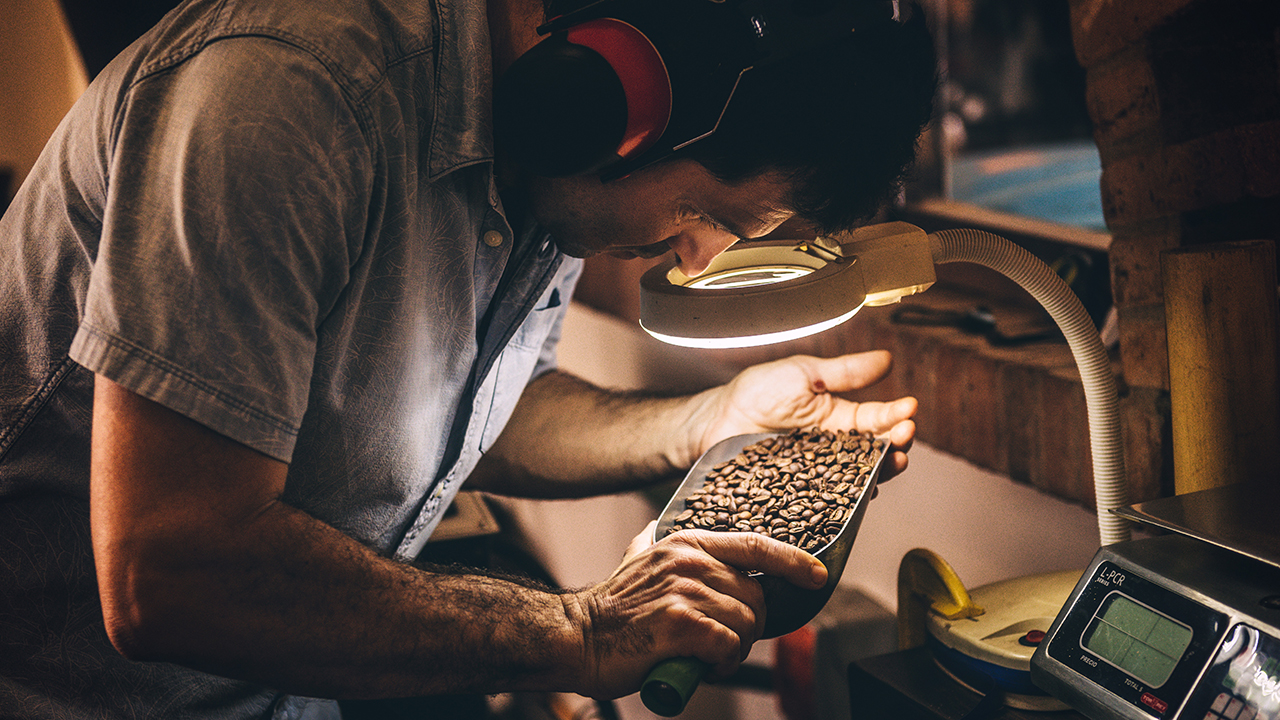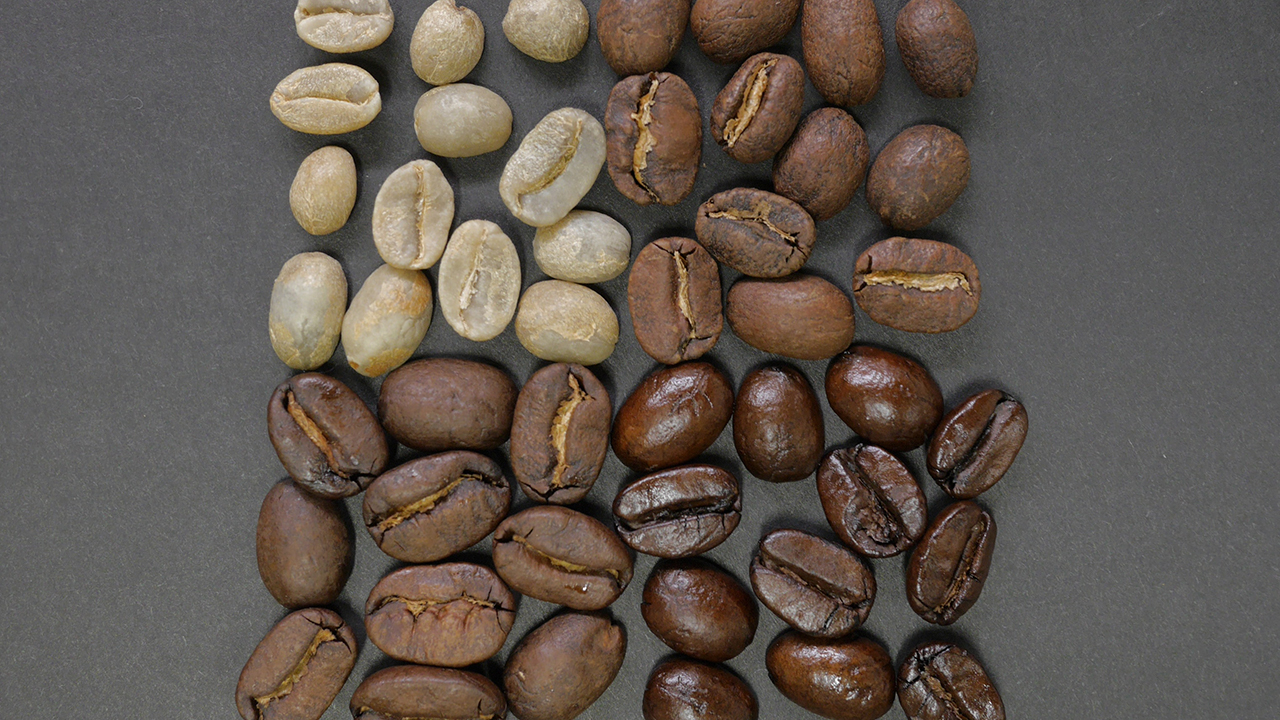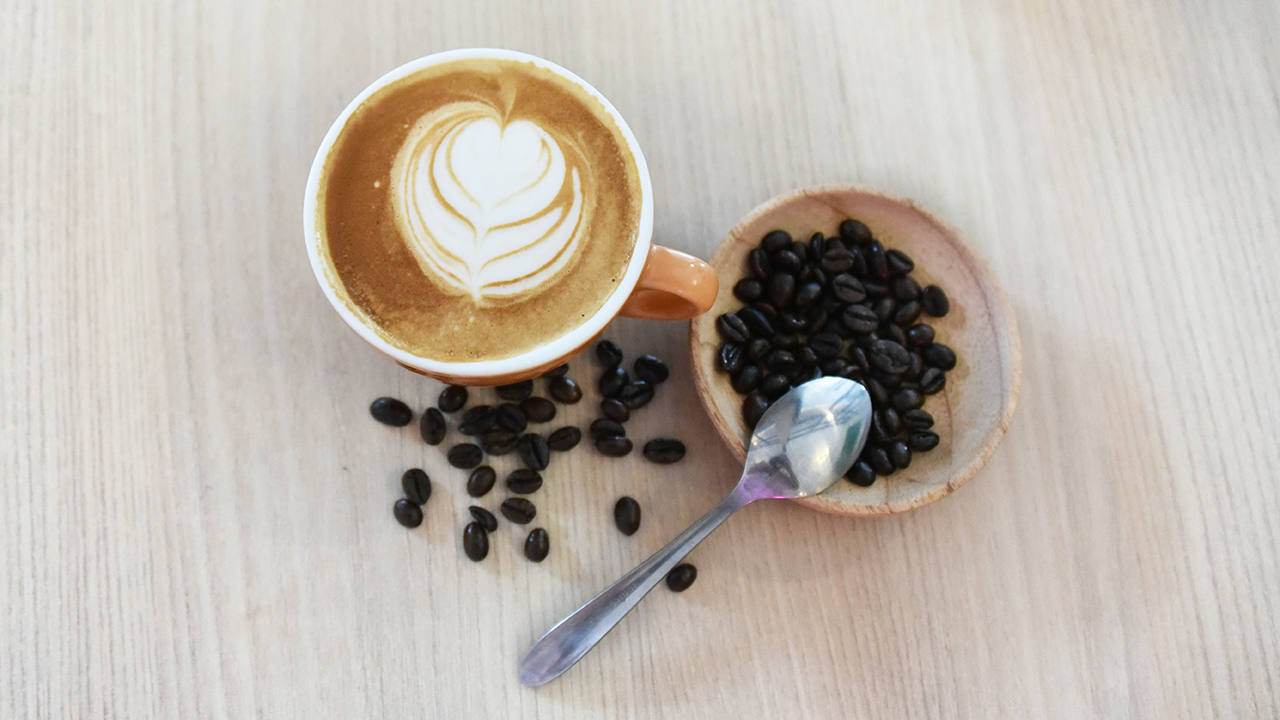Light to dark roast coffee - a simple guide
Ollie | November 29, 2023 | 4 minute read

Questions about coffee roasting can be scary. And especially unwelcome for those gasping for any caffeine-filled cup to kickstart their day. But you don’t need to be a specialty coffee guru to care about your roasts. Just a little learning can elevate your coffee tasting experience – and inspire you to find new favourite flavours. This simple guide on light to dark roast coffee is the place to get started.
What is coffee roasting?
Roasting is cooking. How do you take your steak? And how dark is your morning toast? (My toaster setting is between 3 and 4).
In the same way – raw, green coffee beans need heat to turn brown before they can be consumed. When this happens (usually in drum roasters), chemical reactions determine the bean’s flavours, smell, appearance and properties. Much like how your rare steak tastes different to your well-done, roasting coffee beans drives out beans’ moisture and changes them dramatically.
Within coffee roasting – and the degree and time heating determines it all: the coffee’s bean’s bitterness, acidity levels; and the extent its natural flavours and aromas are unlocked. Yes: like food, you can burn coffee.
Discover More: Coffee Glossary – The Complete A-Z Guide
How to judge roasted coffee beans?
 Photo by @timmossholder via Unsplash Images
Photo by @timmossholder via Unsplash Images
Before reading on. We need to appreciate that all coffee lovers and cultures have different tastes and roast preferences. Therefore: any attempt to stereotype them can’t set a universal truth. It’s up to you to get tasting!
What is light roast coffee?
 Photo by @nousnou via Unsplash Images
Photo by @nousnou via Unsplash Images
As it sounds, light roast coffee is roasted lightly. Usually this is anytime between 3 and 10 minutes and between 180°C and 205°C. It’s advisable to roast your coffee beans until ‘first crack’ – when an audible pop is heard. This usually occurs around 196 °C and signals that the chemical reactions from heating are transforming the beans into something we’d like to taste. A light roast coffee is taken out of the roaster at (or soon after) first crack.
What are light roast coffees like?
As they’re heated for a shorter time, lightly roasted coffee beans are light brown in colour and contain more moisture than darker roast coffees.
They are also brighter and more acidic. Defined by floral, fruity and herbal flavours. Interestingly, this is because heating them a short time only retains many of the delicate and complex flavours of the natural coffee cherries. When slurping on your light roast coffee, expect a crisp and enchanting taste with a thin body (or lack of heaviness).
What is medium roast coffee?

Let’s take this up a notch. But not too far. For a medium roast: depending on the roaster, our coffee beans spend roughly 5 more minutes in the heat (up to 15 minutes in total) In temperatures between 210°C and 223°C. This makes them a medium brown colour and dry to touch. They are best taken out of the roaster between their first and second audible crack. This second crack (from around 224°C) signals our coffee beans are in a darker roasting stage.
What are medium roast coffees like?
These coffees have a well-rounded body – and a good balance of mild acidity with low bitterness and sweeter profiles. This is because the beans have caramelised more in the roaster. While they may lose some of the floral tones that define lower roasted beans, you can expect a nuanced complexity of flavours. Like the lemon and chocolate tones of the Brazilian Santos whole bean. Or the subtle cedarwood of Santa Barbara.
Discover More: Stock whole bean coffee blends for your office
What is dark roast coffee?
A coffee bean is darkly roasted after its second crack. The beans are in the roaster for between 15 and 20 minutes – and 223°C to 240°C. The result is a dark brown or even black coloured bean with glossy oil on the surface. As it has been cooked longer, almost all the moisture has left the coffee bean and the smoky flavours of the roast have mostly masked the natural flavours of the bean.
What are dark roast coffees like?
 Photo by @sastravila via Unsplash Images
Photo by @sastravila via Unsplash Images
Darkly roasted beans give single-note flavours of coffees. Bold, robust, spicy, and resinous are words that tingle our lips when talking about dark roast coffees. Many leaving tasting notes of nuts, tobacco, brown spices and chocolate in our mouths. These have a heavy body (weight to them) and a strong aftertaste. And because of this, many punchy espressos are darkly roasted to give a concentrated taste.
Final word – get in touch?
These light to dark roast coffee offer broad guidelines and descriptions only. We want to emphasise that light, medium and dark coffees should not be classified in permanent maker – and there is no universal best or worst roast.
If you’d like to learn more? Or talk about trialing a premium coffee machine for your workplace – then please get in touch on 020 7553 7900 (phone) or hello@freshground.co.uk (email).